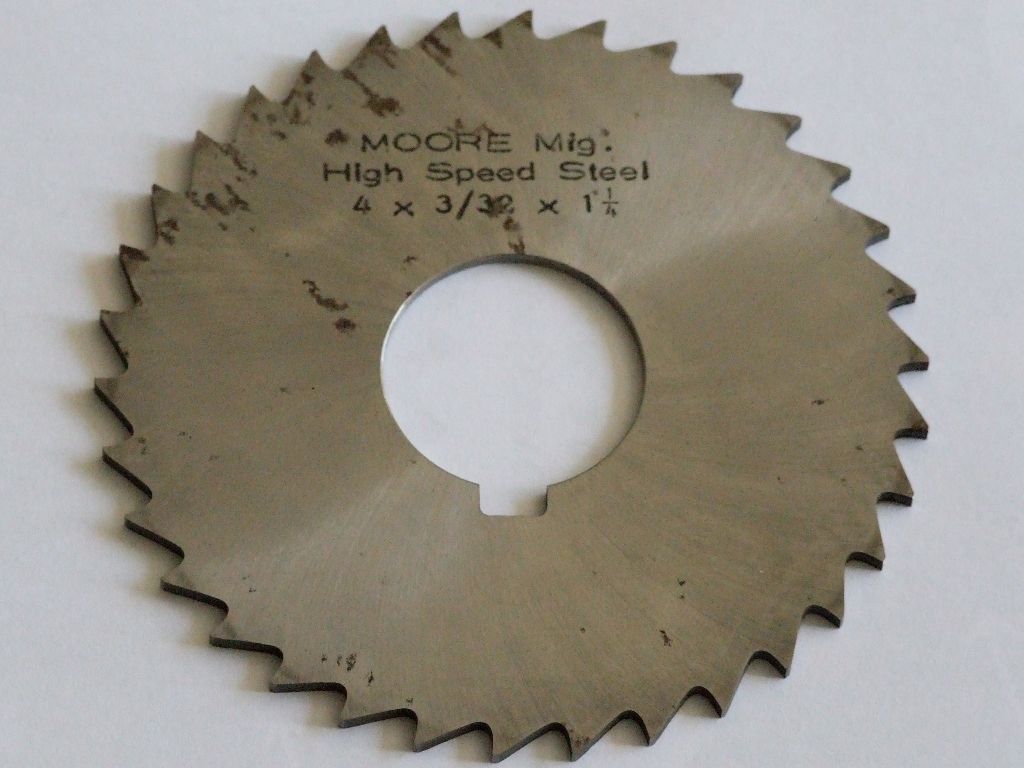Posted by Michael Gilligan on 18/05/2020 23:03:43:
Posted by John Rutzen on 18/05/2020 17:45:00:
The question is why are they eccentric, even new ones? …
.
Which is why I asked you to clarify.
Dave [S.O.D.] appears to disagree, so I guess the question remains open.
MichaelG.
.
Edit: The fact that these ‘ultra precision’ arbors claim a T.I.R. of less than 0.0001” suggests to me that the target eccentricity for a slitting saw should be zero.
**LINK**
Affordable reality will, of course differ … My point was that good QA would make the tolerance known.
…
Not disagreeing, more a suggestion that the reason is practical. Circular saws could be an example where it's cheap and easy to make them moderately accurately, and much more expensive to meet high tolerances.
Another question: is the run-out due to the mounting hole being off-centre, or is it due to the teeth being cut to different depths? As turning discs accurately to a diameter is painless, I suggest run-out is caused by errors introduced by cutting the teeth.
I don't know but imagine the teeth are ground one at a time with a form grinding wheel that's redressed or replaced when it wears badly, and the machine re-set. Likely more than one form tool is used to finish teeth. Easy to imagine a fine form wheel wearing as it goes so the last tooth is cut smaller than the first. It's a hypothesis, but the evidence is weak. Nonetheless, it suggests a maker of cheap saws might leave form wheels running for as long as possible provided teeth came off reasonably sharp, and not worry much about their sizes!
Tolerances could be lifted by frequent redressing, maybe using a coarse wheel to remove bulk and a fine lightly loaded wheel to finish, perhaps a wear detector on the machine, and inspection.
Michael's 'This is the most helpful document that I have found so far: **LINK** ' made this morning's coffee delicious.
'Automated optical inspection for the runout tolerance of circular saw blades' describes a computerised optical jig for measuring radial and axial run out, repeatable to 2µm. The 2012 paper says the jig is innovative in that existing saw inspections are point contact methods, unreliable because the point wears out!
Despite the shortcomings of point contact methods, the authors found the radial and axial run-outs of their sample saws (inserts, not HSS) made by Yih Troun (Taiwan), were close to 45µm (radial) and 75µm (axial). Pretty good! The maker specification claims radial run-out of 0.03% of nominal diameter, about 30µm on the 100mm test blade (fail), and 60µm on a 100mm blade (pass). This is about 4 times better than the Martindale saws mentioned earlier, and I guess it's because the academics tested their rig on the most highly specified blades they could buy.
I guess saw-blades follow the usual law: high-specification tools cost more than low-specification tools!
But I wonder how much radial run out matters? The noise is annoying, but I don't think one tooth does all the work. Whilst the first tooth cuts deeper than the next, I reckon all the teeth cut because the saw blade is traversing as well as rotating? It's analogous to what happens when two locomotives pull a heavy train. If the first loco travels at 10mph and the second is doing 9.9mph, then the first loco must be pulling the train and the second loco, right? No, it's the sum of both engines that pulls the train.
I guess uneven tooth wear is the main ill-effect of runout. High teeth go blunt first, eventually leaving the saw half-sharp and half-blunt.
Run-out matters when blades are spun at high-speed but we don't do that. Nor do we care much about wear; as tool-changing is an expensive time-waster on production machines it probably pays to buy saws that wear evenly for maximum life between tool-changes. Very little value paying monster money for saws in my now and again workshop.
Maybe tool-abuse is more problematic in home workshops than saw run-out? I misuse mine! The small ones don't have any relief and I guess they're for very shallow slots or slicing sheet metal or thin-walled pipe. Likewise, although most of my bigger saws have relieved big teeth, the disc is flat and I doubt they're intended to cut deep – they're slotting saws. One saw, picked up last year in ignorance at an exhibition, has big teeth and side relief: this I think is the real McCoy, designed to chop metal. Naturally enough, I've been chopping metal with slotting saws for a good few years, certainly bad for the saw and explains why caught swarf was such a problem.
In my workshop, the Operator has much to answer for! 
Dave
 John Hinkley.
John Hinkley.





